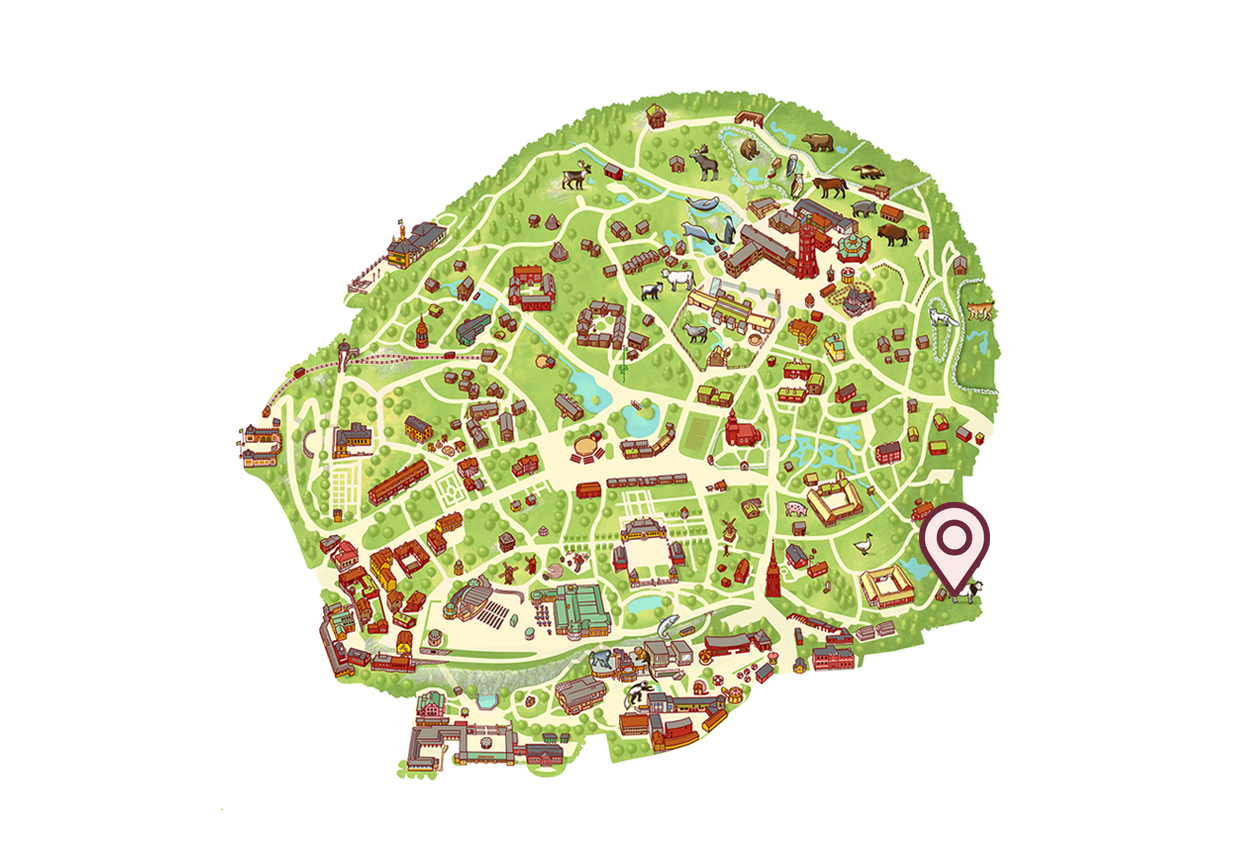Swedish Friesian
The Swedish Friesian is a breed of cow that has existed in Sweden for about a century. Today, there are only about 50 cows in Sweden that are completely original Swedish Friesians.
You can find the Swedish Friesian here

The Swedish Friesian is a breed of cow that has existed in Sweden for about a century. Today, there are only about 50 cows in Sweden that are completely original Swedish Friesians.

| The Children´s zoo (Lill-Skansen) included in the entrance fee |
|---|
| Jan-Mar weekdays10-15 weekends 10-16, April 10-16, May 10.00–17.00, Jun-Aug 10.00-18.00, Sept 10.00-17.00, Oct-Dec weekdays 10-15, weekends 10-16 |
| Baltic Sea Science Center, included in the entrance fee |
|---|
| Jan-Mar weekdays10-15 weekends 10-16, April 10-16, May 10.00–17.00, Jun-Aug 10.00-18.00, Sept 10.00-17.00, Oct-Dec weekdays 10-15, weekends 10-16 |
| Funicular railway (Bergbanan) | |
|---|---|
| The funicular railwayruns daily during Easter, weekends in April and thereafter daily. |
| The Skansen-Aquarium |
|---|
| Opens daily 10.00 see calendar for closing hours |